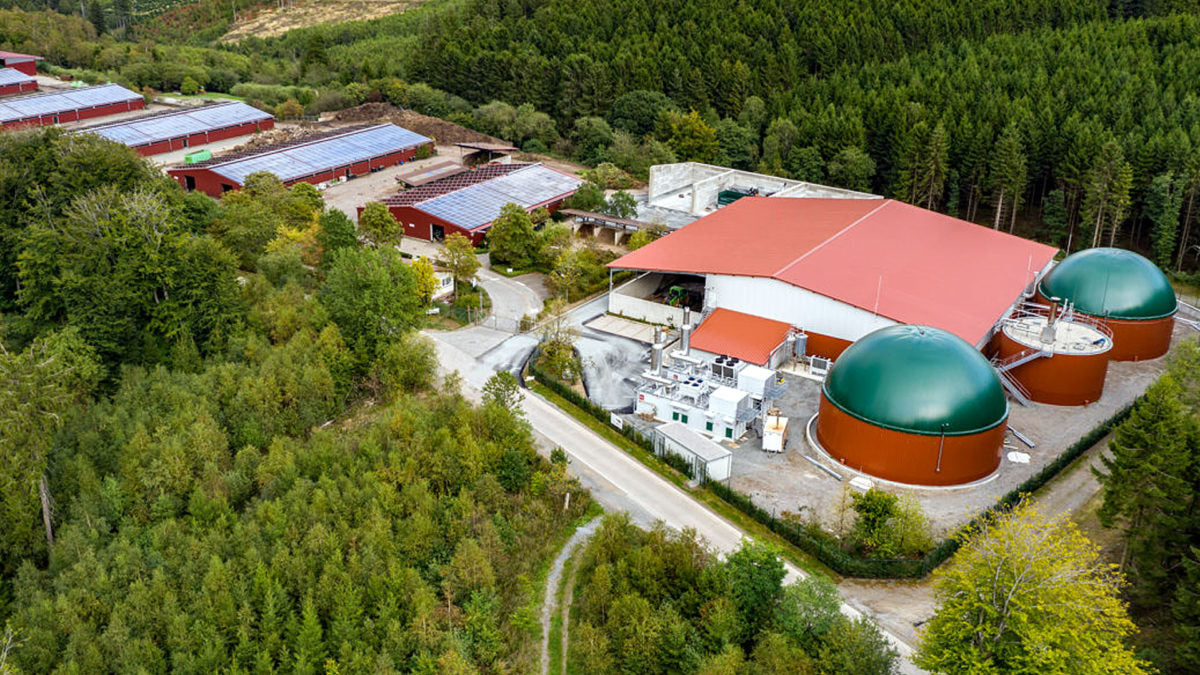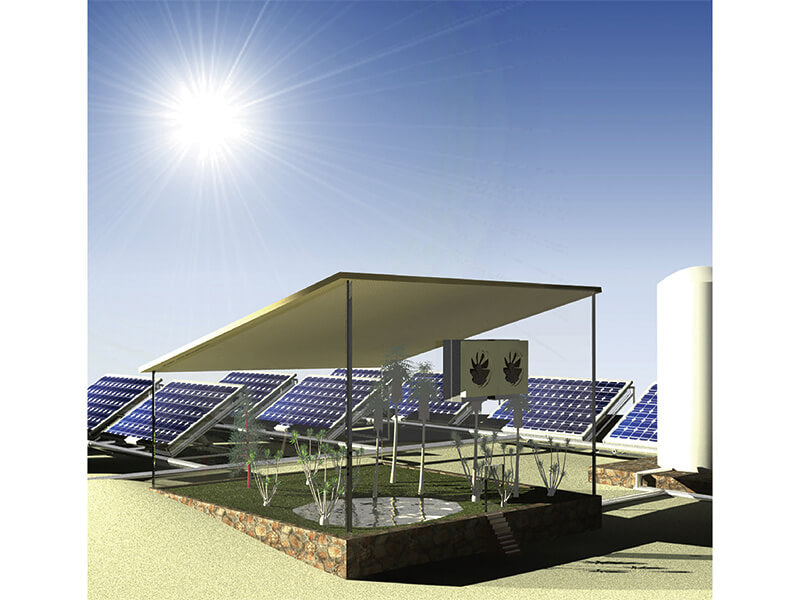https://www.pv-magazine.com/2022/07/12/photovoltaics-and-anaerobic-digestion/
Photovoltaics and anaerobic digestion

An anaerobic digester system in Germany
Image: Thzorro77, Wikimedia Commons
Researchers from the Arab Academy for Science have tried to assess the viability of combining PV plants and cattle manure anaerobic digestion (AD) projects in the livestock business in Egypt.
An anaerobic digestion plant is a power facility that can produce methane from manure.
“In an anaerobic digester, the organic substrate is first liquefied by bacteria,” the scientists explained. “This is followed by a two-step process involving acid production by acid-forming bacteria (acidogenesis) and methane production from the acids with methane-forming bacteria (methanogenesis).”
In “Case study for optimum techno-economic integration of PV and anaerobic digestion for sustainable agri-business,” which was recently published in Energy Reports, the research group considered the use of renewable energy in a hybrid configuration for a 6,300-square-meter farm capable of housing 200 head of milk/beef cattle in El-Horeya, a village near Cairo.
“The farm suffers from a continuous electrical power outage that disturbs the daily production schedule and affects the quality of refrigerated products,” they said. “In addition, mistiming of machinery operations for cattle-feed mixing and milking – due to sudden power outage – significantly reduces both milk and beef productions causing financial losses that threaten the business.”
The Egyptian group used Particle Swarm Optimization (PSO), a stochastic optimization method based on the movement and intelligence of swarms, to minimize the CoE of both energy sources in the modeling. They considered constraints such as the maximum number of cattle and the maximum are available for a PV system.
They found that PV systems require a larger area than the AD plant for the same daily production, and that the initial cost for both technologies is very close for energy production less than 25 kWh. The area needed for the solar array was estimated at around 93 square meters.
Popular content
“The CoE from the AD project is relatively higher than PV for loads less than 45 kWh per day due to the high price of the biogas-powered electrical generator,” they said, noting that AD is the cheapest option for daily production greater than 45 kWh.
The farm's daily load was estimated at about 60 kWh and the cost of energy (CoE) of the PV installation and the AD systems were $0.029/kWh and $0.0273/kWh, respectively, while the final average CoE for the hybrid plant was estimated at $0.0226/kWh. For both energy facilities, the academics assumed a rate of return of 9%.
“The inflation rate is calculated according to the central bank of Egypt and it averaged 8.95% for the last 57 years,” they explained. “The initial cost of any system was calculated according to a 30% government grant for renewable energy projects.”
The scientists concluded that both energy sources are affordable for small-scale farms, although their CoE is higher than that of grid electricity. They also said that the proposed hybrid dual configuration increases the reliability and availability of power supply.
“The implementation of renewable energy projects in a manner suitable to the farming workspace in Egypt shall increase the profitability of the farming business, attract investors by combining energy and farming businesses, help the land reclamation planned for the country in rural areas, and reduce the demand on the national power grid,” they said.
This content is protected by copyright and may not be reused. If you want to cooperate with us and would like to reuse some of our content, please contact: editors@pv-magazine.com.




